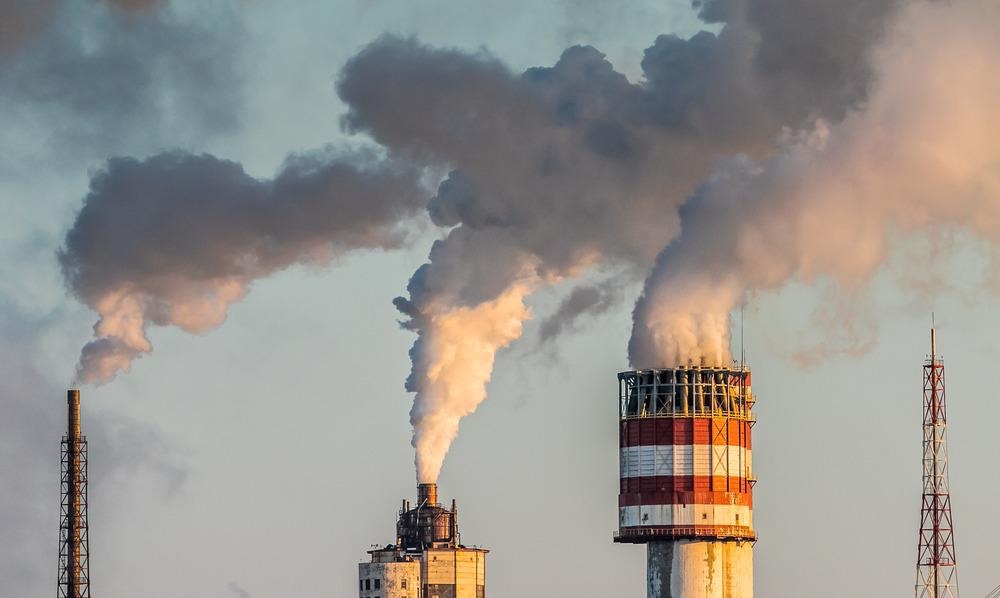In commemoration of Pollution Prevention Week 2021, AZoCleantech looks at Iceland's Orca plant and the future of carbon capture technology.

Image Credit: Rokas Tenys/Shutterstock.com
What is Carbon Capture and What Role Does it Play in Reducing the Effects of Pollution?
Carbon capture technology is expected to play a vital role in limiting carbon emissions from the world’s most polluting industries. In particular, it will help those sectors for which it is more challenging to switch to clean energy sources reduce their carbon footprint by capturing and storing the carbon emissions related to burning fossil fuels.
Carbon capture technology and storage of captured carbon present an opportunity to reduce the emissions related to non-renewable energy use by up to 90%. While it is not the complete answer to stopping climate change, it will be fundamental in helping industries meet emissions goals.
Carbon Capture Technologies Around the World
As of 2020, the world had 26 commercial-scale carbon capture projects in operation, with almost double (21) in the early development stage and an additional 13 in the advanced development stage. Currently, these carbon capture facilities have been put to work in reducing the carbon emissions of a wide range of activities, including coal-fired power generation, coal gasification, ethanol production, fertilizer production, natural gas processing, and refinery hydrogen production
Carbon Capture Technology Explained | Seachange
Video Credit: Freethink/YouTube.com
The era of the carbon capture plant has rapidly begun to pick up speed, with key carbon capture milestones now being met every year. The year 2020 alone witnessed the achievement of two major milestones, including the capture of more than 4 million tons of carbon at the Boundary Dam 3 facility, located in Saskatchewan, Canada, and the capture of over 5 million tons of carbon dioxide at the Shell Quest project in Alberta, Canada.
It was also announced in 2020 that the Norwegian energy company Equinor would launch the Hydrogen to Humber Saltend (H2H Saltend) project in the UK, which aims to produce zero-emission hydrogen from natural gas in combination with carbon capture and storage technology.
The Orca Plant: Advancing Carbon Capture Technology
Following in the footsteps of previous carbon capture technology projects was the launch of Orca on 8 September 2021. Orca is the world’s largest carbon capture plant as well as the world’s first climate-positive direct air capture and storage plant.
The project was created by Climeworks, and Orca is the name of the company’s direct air capture and storage plant in Iceland. The plant will go further than previous carbon capture projects by combining direct air capture technology with carbon dioxide storage, allowing for industrial-scale direct carbon capture and storage.
Introducing Orca - the world's first largest direct air capture and storage plant
Video Credit: Climeworks/YouTube.com
The solution uses a nearby geothermal power plant to provide energy for its fans, filters, and heaters that are all enlisted to pull tons of carbon dioxide out of the air and move it into underground caverns. Once underground, the carbon dioxide is mixed with water and, as it cools, slowly turns to stone.
The facility was built in 15 months using eight stackable container-sized collector units. The speed at which the facility can be constructed provides a blueprint for future projects and offers a replicable system that will help to grow the global carbon capture and storage capacity.
Orca aims to capture 4000 metric tons of carbon dioxide annually, adding to the 900 tons of carbon dioxide Climeworks’ first facility, which opened in Switzerland in 2017, captures each year.
The Future of Carbon Capture Technology
Christoph Gebald, the co-founder of Climeworks, states that the market for carbon capture technology does not yet exist, but it is “a market that urgently needs to be built”. He highlights that the Orca plant provides the basis from which future projects can scale up and industrialize the technology.
The opening of the Orca plant grew the world’s annual carbon capture capacity to 13,000, representing an increase of 40%. This represents the huge step forward Orca has made but also the infancy of this sector.
The world’s current carbon capture capacity is just a fraction of what it needs to be to have a significant impact on reducing human-created carbon emissions. In 2020, roughly 31.5 billion metric tons of carbon dioxide were released into the atmosphere, leaving Orca with the capacity to capture emissions equivalent to the annual carbon footprint of 790 cars.
The founders of Climeworks aim to increase the company’s carbon capture capacity to 500,000 metric tons by 2030. There are also plans to construct a plant ten times the size of Orca within the next three years. Other companies are following the same path. For example, there are plans to build a facility in Scotland by 2026 that will capture 500,000 to 1 million metric tons of carbon dioxide.
Carbon capture technology will play a vital part in the future of the planet. It will help us to meet climate neutrality goals and to limit the impact of global warming. We are currently in the infancy of this industry which is expected to grow rapidly over the coming years.
References and Further Reading
Carbon Capture. Centre for Climate and Energy Solutions. Available at: https://www.c2es.org/content/carbon-capture/
Carbon capture, utilisation and storage. LEA. Available at: https://www.iea.org/fuels-and-technologies/carbon-capture-utilisation-and-storage
Let’s reverse climate change. Climeworks. Available at: https://climeworks.com
The world’s largest climate-positive direct air capture plant: Orca!. Climeworks. Available at: https://climeworks.com/orca
World’s Largest Carbon Capture Plant Opens in Iceland. Ben Panko. Smithsonian Magazine. Available at: https://www.smithsonianmag.com/smart-news/worlds-largest-carbon-capture-plant-opens-iceland-180978620/
Disclaimer: The views expressed here are those of the author expressed in their private capacity and do not necessarily represent the views of AZoM.com Limited T/A AZoNetwork the owner and operator of this website. This disclaimer forms part of the Terms and conditions of use of this website.